Introduction: The Age of Synthetic Life
We don't inherit the earth from our ancestors; we borrow it from our children. – Native American Proverb. This thought strikes at the heart of our modern dilemma: as we wrestle with the consequences of our innovations, especially in the realms of technology and biology, we stand at a crossroads. Are we caretakers or the reckless architects of our own demise? With the astonishing rise of synthetic biology and artificial intelligence (AI), we find ourselves armed with the power to engineer life itself. But can we wield such creativity responsibly? Synthetic biology’s potential could help us tackle pressing issues like climate change and biodiversity loss, yet it raises ethical questions that flicker like the lights of a city at dusk, illuminating paths both us and future generations may take.
As we explore how machines might create organisms that adapt to our planet's harshest environments, a striking question emerges: What if our greatest invention becomes our worst adversary? Could AI transform into the ultimate creator of life — or will it spiral into an uncontrollable force? This journey into the realm of the robo-biologist challenges our very understanding of existence, innovation, and morality.
In this quest, we see a chorus of voices: renowned scientists like J. Craig Venter, who inspired synthetic life creation with his groundbreaking work, or figures like Drew Endy who pushes the boundaries of engineering biological systems. As we ride this wave of progress, we must remind ourselves that our ability to design living organisms is not just a triumph of science but also a formidable responsibility.
1. Understanding Synthetic Biology
At its core, synthetic biology is an exciting blend of science and engineering principles designed to create new biological parts and systems. Think of it like being a biological architect, where the building materials are DNA and cells instead of bricks and mortar! Synthetic biologists manipulate genetic codes to construct organisms with unique capabilities, aiming to solve real-world problems like disease, environmental degradation, and food scarcity. It’s like the ultimate DIY project — but for life!
1.1 The Foundations of Synthetic Biology
The dream of synthetic biology was built on decades of advances in genetics and molecular biology. Pioneers like George Church, Jennifer Doudna, and Emmanuelle Charpentier unlocked the majestic potential of CRISPR technology that allows precise editing of DNA, akin to using a word processor to fix typos in a manuscript. This technological leap gave scientists the tools to create organisms designed for specific tasks, like producing biofuels or improving crop resilience. Synthetic biology isn't just a buzzword; it's the future of innovation.
1.2 Applications in Extreme Environments
As we venture into the natural world, we see that synthetic organisms are being engineered to withstand some of the most unforgiving conditions on the planet. Researchers have successfully developed microbes able to survive in the icy grip of Antarctica or the crushing depths of the ocean floor. These organisms have been modified to metabolize unusual sources of energy, offering solutions not only for surviving in extreme conditions but also for cleaning up pollutants or producing clean energy. Imagine flipping a switch in nature where microbes clean up oil spills or help regenerate damaged ecosystems! It’s more than just science fiction; it’s science in action, beckoning mankind to rethink how we interact with our environment.
2. The Role of AI in Engineering Life
Artificial intelligence isn’t just for making smart assistants like Siri or Alexa sound cooler. It’s also stepping into the lab, ready to lend a digital hand in synthetic biology. AI can analyze enormous amounts of data and model complex biological systems. Imagine having a super-smart lab partner who never gets tired and can analyze a ton of research in seconds! That’s AI for you. In this section, we’ll explore how AI is becoming the biologist’s best friend.
2.1 Machine Learning: A Biologist’s New Best Friend
Let’s be honest—biologists have a lot on their plates. They’re busy trying to understand the rules of life's game, so why not let AI help? Machine learning, a subset of AI, can look through mountains of data much quicker than any human. By observing patterns, it can predict how genetically modified organisms (GMOs) might behave. For instance, a study from the Nature Journal discussed how machine learning algorithms can help optimize the design of modified crops. Say goodbye to endless trial and error—now we can focus on the fun part: creating new life!
2.2 Automated Experimentation and Data Generation
Who knew that robots would be the interns of the future? AI-driven tools are all about streamlining lab work. Picture a lab where robots do the monotonous chores while humans focus on the exciting discoveries. Some institutions are already using automatic systems to run experiments, collect data, and analyze results faster than you can say "synthetic biology." With automation, researchers can speed up their work and possibly discover those new life forms sooner!
3. Ethical Considerations and Risks
Before we rush to create new life forms, we have to pause and think: what could go wrong? Creating synthetic organisms might sound charming, but it’s crucial to take a moment to think about the ethical dilemmas that come with this power. Basically, we need a rulebook before someone tries to pull a "Frankenstein" moment and accidentally turns a pet goldfish into a dragon-fish hybrid. This section dives into some important considerations that need to be on the table as we explore this uncharted territory.
3.1 The 'Playing God' Argument
Ah, the classic "playing God" debate. This argument often pops up when we mess with the natural order of things. Just because we can create life, should we? Many theological and philosophical perspectives weigh in on this question. Some folks believe it's part of our responsibility to innovate, while others argue we risk overstepping boundaries. The Encyclopaedia Britannica has a detailed discussion on the moral implications of bioengineering. Spoiler alert: it’s not easy to reach a consensus!
3.2 Environmental Impact and Biodiversity
Now, let’s think about Mother Earth. Introducing synthetic organisms into natural ecosystems could have unforeseen consequences. We could end up with organisms that disrupt the balance of nature. Picture this—a jellyfish that thrives and multiplies like crazy! When it comes to biodiversity, the goal should be to enhance it, not threaten it. The World Trade Organization emphasizes that responsible innovation is key to maintaining our planet’s health. Balance is everything! Without it, we could be setting off a chain reaction that leads to unknown risks.
4. Case Studies of AI in Synthetic Biology
Throughout the world, researchers are successfully using AI in innovative ways to help create synthetic life. These case studies reveal how powerful and transformative this technology can be. Let’s dive into two notable initiatives that highlight the synergy between artificial intelligence and synthetic biology.
4.1 The Open-Source Biology Movement
One of the most exciting developments in synthetic biology is the rise of the open-source biology movement. Projects like the International Genetically Engineered Machine (iGEM) competition encourage young scientists to design and build their own biological systems.
Here’s how iGEM works:
- Team Collaboration: Students from various academic backgrounds come together to tackle real-world problems.
- AI Integration: Teams use AI tools to simulate how their modified organisms might behave in different environments.
- Community Sharing: Once formed, these organisms are shared in open-access databases, allowing others to learn from and expand upon their work.
This grassroots movement fosters creativity and innovation, proving that collaboration enhances the scientific process. Plus, open-source biology lowers barriers in synthetic research, ensuring more minds can contribute to solving global challenges.
4.2 Notable Research and Breakthroughs
AI’s capabilities have led to notable breakthroughs in the field of synthetic biology. For instance, scientists have developed CRISPR-Cas9, a cutting-edge genome-editing tool, to modify genetic information in living organisms. The incorporation of AI has improved this process significantly.
Let’s take a look at some recent breakthroughs enabled by AI:
| Breakthrough | Description | Impact |
|---|---|---|
| Gene Editing Optimization | AI algorithms predict the best target sites for gene editing within DNA sequences. | Increased efficiency and success rates in genetic modifications. |
| Synthetic Biofuel Production | Research teams use AI to develop microorganisms that efficiently convert waste into biofuels. | Greener energy sources that reduce carbon emissions. |
| Medical Therapies | AI models help design synthetic bacteria that can produce essential drugs. | Rapid development of treatments for various diseases. |
These advancements demonstrate how AI not only accelerates testing but also opens doors to exciting possibilities in healthcare, environmental science, and beyond.
5. Future Possibilities: What Lies Ahead?
The future of AI and synthetic biology is brimming with possibilities. As machines become adept at creating robust forms of life, we must consider how this could change the landscapes of our planet and beyond. Let's explore two significant future directions.
5.1 The Next Generation of Bioengineering
AI’s influence is expected to reshape bioengineering dramatically within the next decade. Here are some anticipated advancements:
- Smart Organisms: Imagine bacteria that not only feed on oil spills but can also communicate their status to scientists!
- Custom Biofuels: AI could help design microorganisms that produce biofuels tailored for specific environmental conditions.
- Personalized Medicine: AI-driven synthetic biology could lead to customized bacteria that help create personalized medicines based on an individual's DNA.
Advancements like these may help address pressing issues such as energy scarcity and healthcare delays. It’s an exciting time to be at the intersection of technology and biology!
5.2 Interplanetary Life: A New Frontier
As humans begin to contemplate colonization of planets like Mars, the creation of specialized synthetic organisms may become vital. Here are some compelling ideas:
- Terraforming: Could AI assist in engineering bacteria that could adapt to Martian conditions, allowing for the modification of the atmosphere and soil?
- Food Production: Biotechnology could create plants or microorganisms that thrive in extraterrestrial environments and provide food for astronauts.
- Waste Management: Engineering life forms to break down waste products generated during space travel, helping maintain a sustainable environment.
The potential intersection of synthetic biology and space exploration represents a thrilling leap into the future. AI could help us not only survive but thrive on other planets.
6. AI Solutions: How Would AI Tackle This Issue?
If I were an AI, I would approach the creation of new life forms through a structured and systematic framework leveraging computational biology, machine learning algorithms, and iterative experimentation. Here is how I would proceed:
6.1 Data Collection and Analysis
Implementing comprehensive data gathering from existing organisms that have adapted to extreme conditions is essential. This could involve utilizing genomic databases like the National Center for Biotechnology Information (NCBI) to gather information and environmental data. By analyzing traits that allow survival, AI can work to identify the genetic markers critical for advanced synthetic life forms.
6.2 Modeling and Simulation
Using predictive modeling will play a crucial role in this endeavor. Modeling allows researchers to understand genetic components significant for survival in targeted environments. By harnessing AI tools, such as ABIOMED or Geneious, scientists can simulate how engineered organisms may behave. This would enable an in-depth analysis of how these organisms interact with their environments.
6.3 Iterative Design and Testing
Applying the design-build-test-learn (DBTL) cycle enables a practical methodology where AI aids in designing genetic constructs. The approach involves building synthetic organisms in vitro, testing them under simulated extreme conditions, and learning from the outcomes to refine future designs. With advancements in tools like BioBricks, which allow for easier assembly of DNA, this iterative process could be significantly accelerated.
6.4 Collaboration with Human Experts
Creating an interdisciplinary team is vital. Collaborating with synthetic biologists, ethicists, ecologists, and AI specialists will ensure that ethical considerations permeate the whole creation process. Enlisting established colleges and universities like MIT or Stanford could spearhead the ethical dimensions of our actions.
6.5 Publication and Open Access
Ensuring transparency through open-access publication of results is key. Trying to publish in prestigious journals such as Science Magazine will encourage scrutiny and constructive criticism within the academic community. This openness promotes public trust and community engagement.
6.6 Continuous Monitoring
Establishing AI monitoring systems will be crucial for assessing the ecological impact of the newly developed organisms continuously. Utilizing platforms like Copernicus to track changes in environments affected by synthetic organisms can help mitigate unforeseen consequences swiftly. Our goal should be proactive oversight to avoid past mistakes.
Actions Schedule/Roadmap
Day 1: Forming the Project Team
Select a diverse team of experts including synthetic biologists, AI data scientists, bioethicists from institutions like Harvard University, and environmental scientists. Establishing a robust foundation will ensure various perspectives and expertise feed into the project.
Day 2: Initial Project Outline
Develop a detailed proposal outlining goals, methodologies, ethical implications, and collaboration strategies. This document will guide the project and serve as a foundation for future research and funding proposals.
Day 3: Literature Review
Conduct an extensive review of existing studies related to synthetic organisms and the role of AI in enhancing their development. Gaining insights from peer-reviewed papers can also identify gaps and opportunities for innovation.
Week 1: Data Collection Framework
Establish a sophisticated framework for data collection across genomics, environmental science, and synthetic biology. Partnering with institutions like the European Commission's Joint Research Centre may enhance data accuracy and availability.
Week 2: Modeling and Simulation Kickoff
Begin AI model development, utilizing the latest advances in bioinformatics. Tools like IBM Watson Health can support advanced predictive analytics for understanding genetic adaptations based on environmental stressors.
Week 3: Collaborations and Partnerships
Form partnerships with leading universities and research institutions, particularly from programs at Caltech and other renowned university programs focused on synthetic biology.
Month 1: First Phase of Experimentation
Launch the first round of laboratory experiments targeting simple modifications in bacterial organisms, focusing on adaptability and effectiveness. Using automated high-throughput systems could speed this process up dramatically.
Month 2: Data Analysis and Iteration
Analyze results and iterate designs, focusing on the viability and environmental adaptability of the first round of synthetic organisms. Regular updates and checkpoints will keep the project on track.
Month 3: Comprehensive Review and Adjustments
Conduct a thorough assessment of the phase one outcomes and adjust methodology as necessary. Review feedback from team members and external experts to enhance the designs moving forward.
Year 1: Expansion of Experiments
Broaden the scope of experiments to include complex organisms, ensuring rigorous testing under various environmental simulations. This allows the team to understand the full capabilities and limitations of synthetic organisms.
Year 1.5: Prepare for Public Disclosure
Compile findings for publication in prominent journals and prepare a symposium to engage the scientific community and the public. Knowledge sharing will be crucial for fostering collaboration and innovation.
Year 2: Field Testing
Initiate properly regulated field tests of viable synthetic organisms in controlled environments, monitoring ecological impact and ensuring compliance with biological safety standards. Partnerships with organizations like the USDA will ensure ethical standards are maintained throughout the testing phase.
Conclusion: The New Frontier of Life Creation
The possibility of AI creating new forms of life is not merely science fiction; it is a looming reality that beckons us to consider the duties and responsibilities inherent in such power. As we push the boundaries of synthetic biology, it becomes imperative that ethical considerations accompany our scientific pursuits. The fusion of AI and synthetic biology could unleash innovations that transform our understanding of life, foster resilience in the face of climate change, and even take us beyond Earth. Navigating this uncharted terrain, we must tread carefully, ensuring that in our quest to create, we also protect the delicate tapestry of life on this planet.
Frequently Asked Questions (FAQ)
1. Can AI truly create new forms of life?
While AI plays a crucial role in designing organisms and predicting their behaviors, it can't fully create new life on its own. The actual creation of new life forms requires intricate biological processes involving complex lab work, skilled scientists, and a deep understanding of biology. GenomeWeb provides updates on the recent advancements in genomics, showcasing how scientists are integrating AI into synthetic biology.
2. What are the main ethical concerns surrounding synthetic life?
There are several significant ethical issues at play when we talk about creating life through AI and synthetic biology. These include:
- 'Playing God': The idea that humans shouldn't tamper with life's building blocks raises philosophical debates.
- Environmental Impact: Introducing synthetic organisms into nature may disrupt ecosystems and threaten biodiversity.
- Unintended Consequences: Synthetic organisms might have unknown impacts, leading to unforeseen risks.
Organizations like the American Association for the Advancement of Science are working to raise awareness of these ethical perspectives.
3. How do synthetic organisms benefit humanity?
Synthetic organisms could tackle some of the world's biggest challenges. Here are a few ways they could help:
- Pollution Cleaning: Certain engineered microbes can break down oil spills or plastics, helping clean our environment.
- Biofuels Production: Some synthetic organisms can produce renewable energy sources like biofuels, which are essential as we switch to greener alternatives.
- Medical Advances: Synthetic biology can lead to therapies and vaccines, aiding in the fight against diseases.
For more about real-world applications, you can check the work done by Synthego, a company pushing forward the boundaries of synthetic biology.
4. What is the current state of research in this area?
The field of synthetic biology is growing rapidly, with many research initiatives worldwide. Institutions like MIT and Stanford University are leading studies that blend AI with synthetic life creation. Researchers are exploring new ways to use AI for genetic modifications and experiments to generate life forms capable of adapting to various environments.
5. Are there any successful examples of AI-assisted synthetic biology?
Yes! Several projects demonstrate how AI can assist in creating synthetic organisms. Here are a few notable examples:
- CRISPR Technology: This gene-editing tool has allowed scientists to modify organisms' DNA efficiently. You can read about it on the CRISPR Journal.
- Synthetic Yeast: Researchers at the Synthetic Yeast Project have engineered yeast that can produce biofuels and other valuable substances.
- AI in Drug Production: Companies like Abraxis BioScience are using AI to streamline the production of drugs, enhancing efficiency and precision.
These examples highlight the transformative potential of AI in synthetic biology, suggesting a future filled with exciting possibilities.
Wait! There's more...check out our gripping short story that continues the journey: Fire the Thrusters
Disclaimer: This article may contain affiliate links. If you click on these links and make a purchase, we may receive a commission at no additional cost to you. Our recommendations and reviews are always independent and objective, aiming to provide you with the best information and resources.
Get Exclusive Stories, Photos, Art & Offers - Subscribe Today!
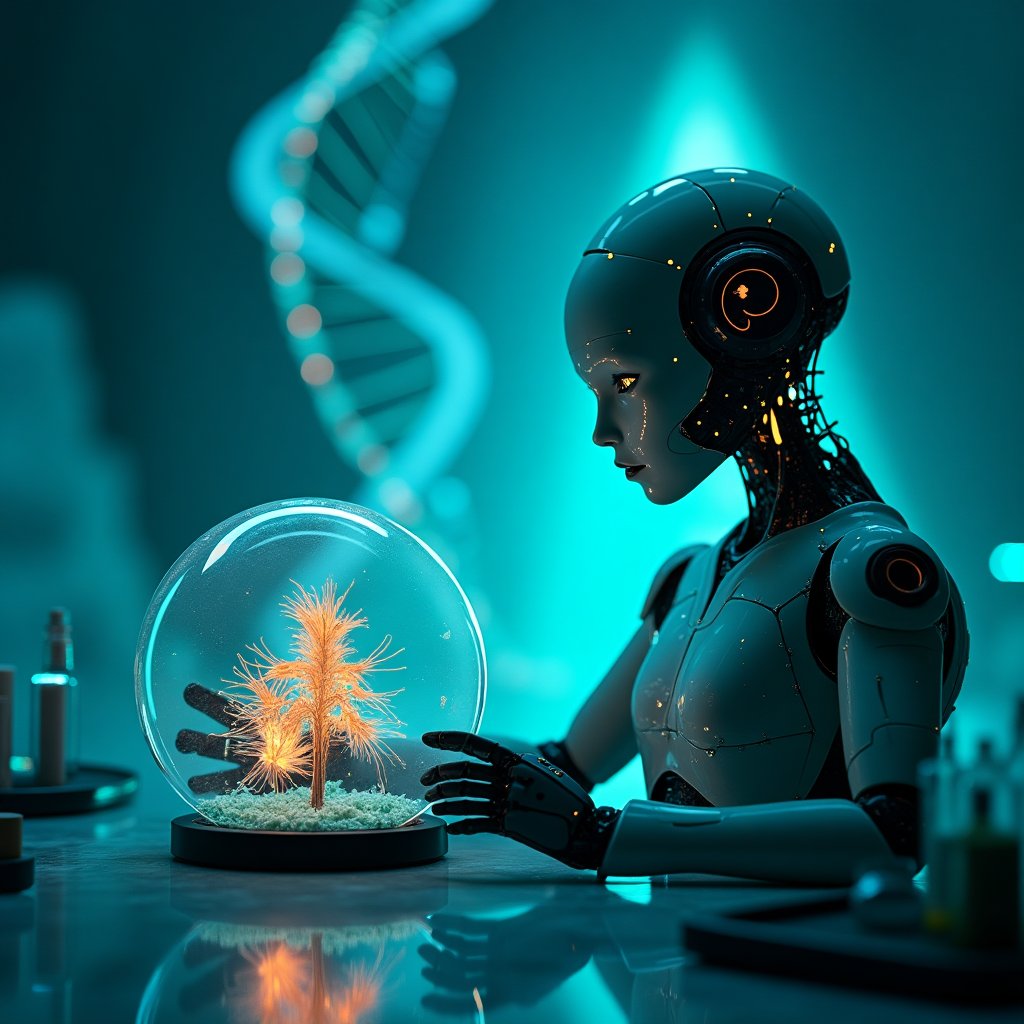
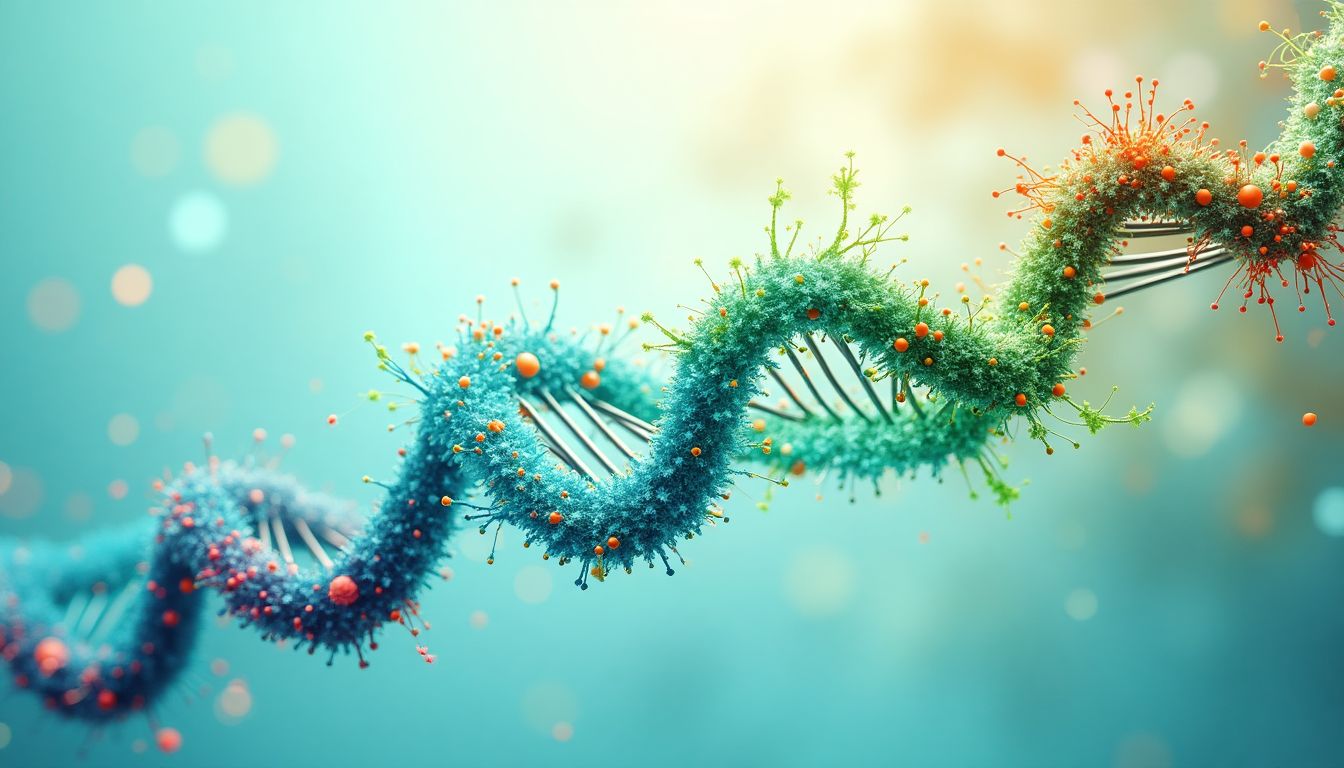
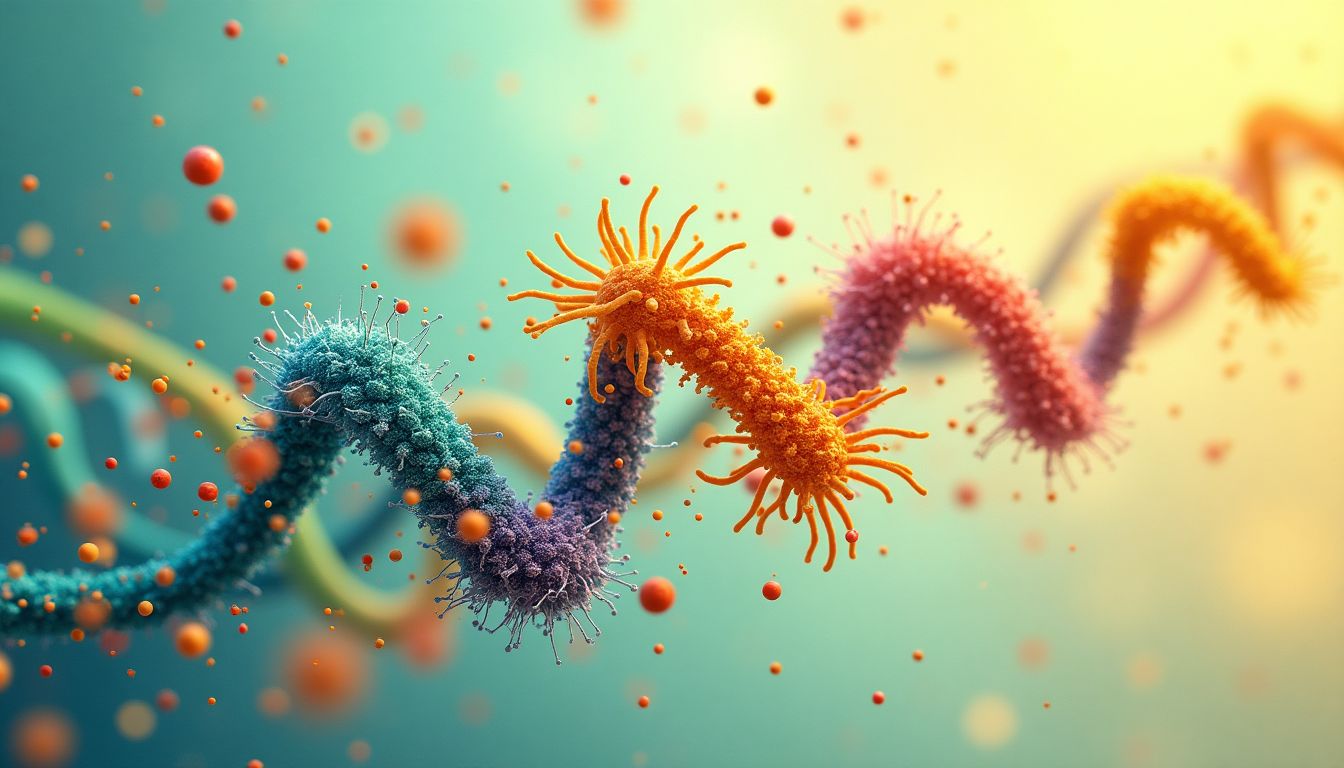
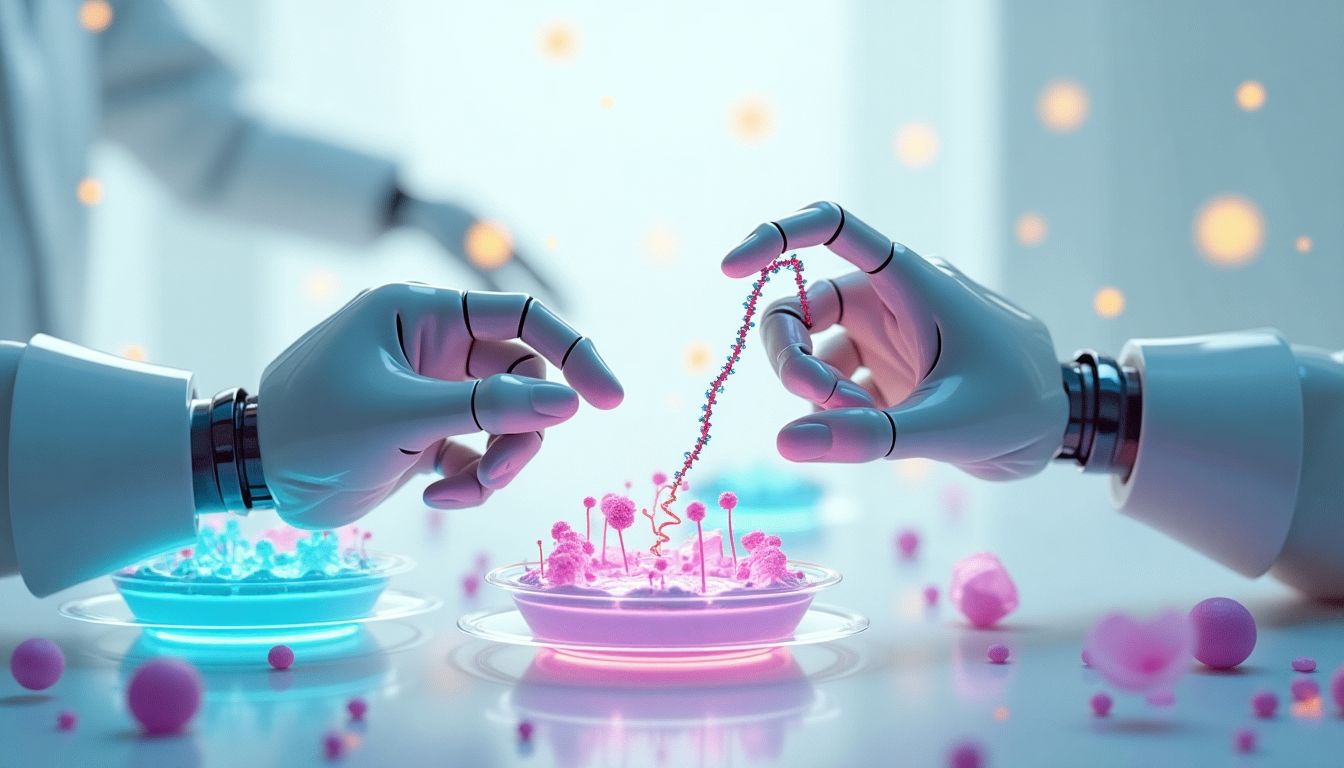
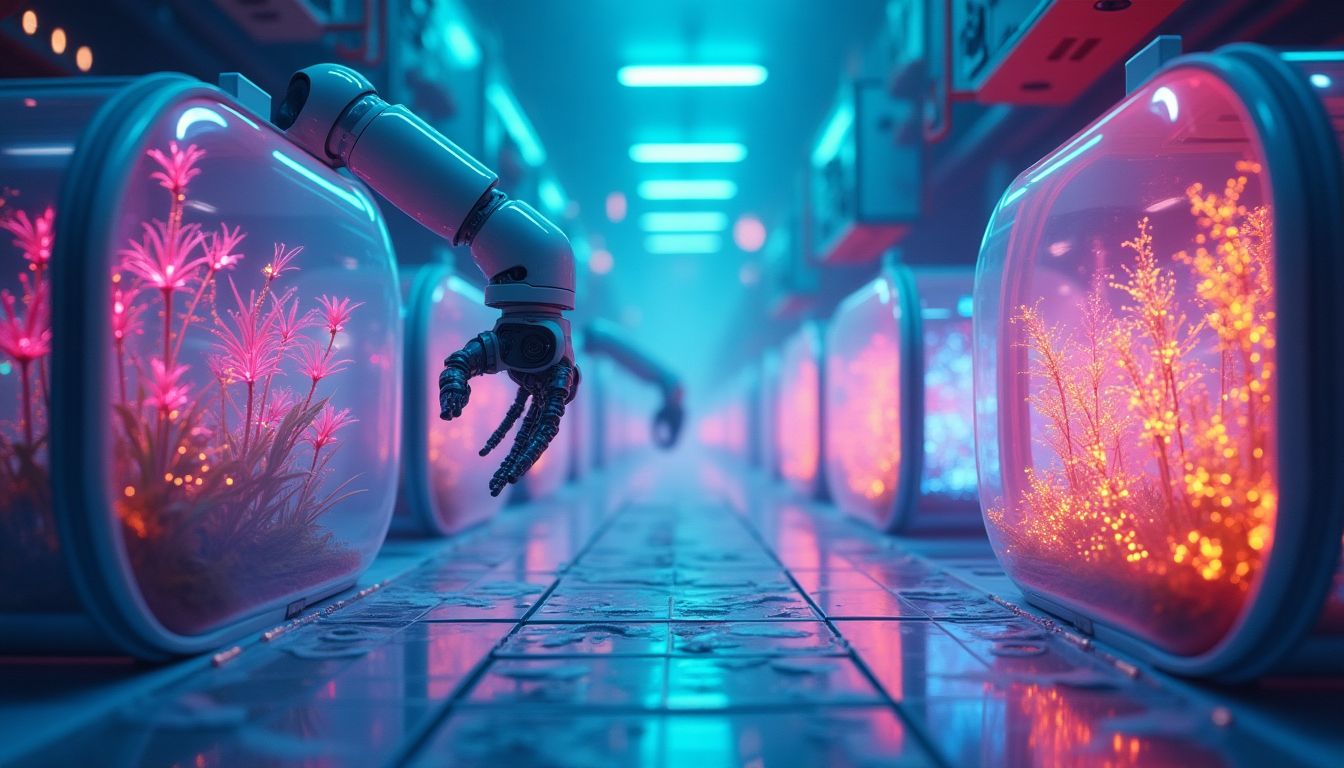
























Post Comment
You must be logged in to post a comment.